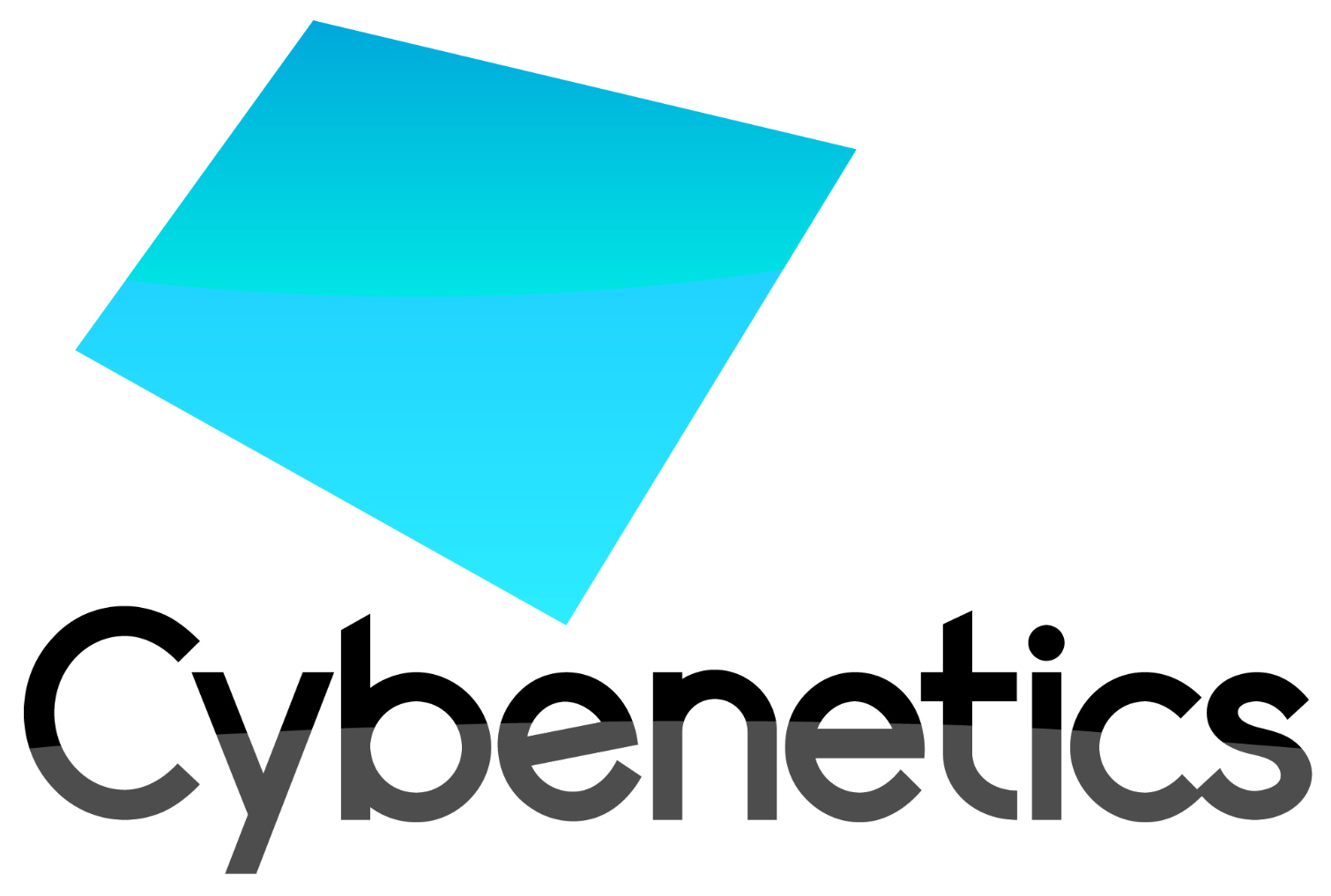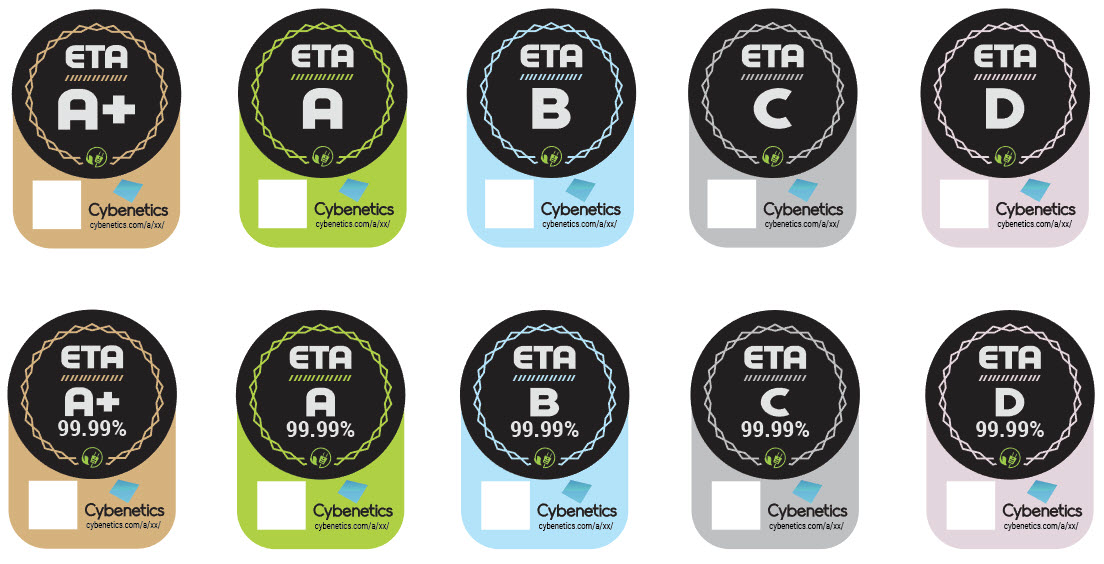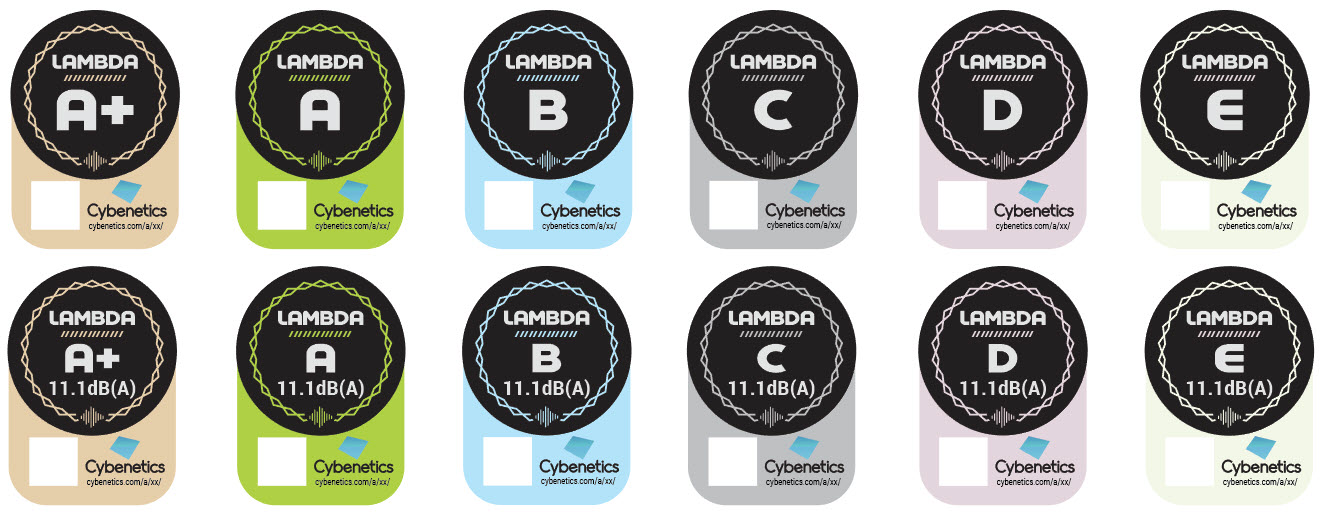Cybenetics Offers New PSU Efficiency Certification
Disclaimer: Aris Mpitziopoulos is Tom's Hardware's PSU reviewer. He developed the certification methodologies described below apart from his role on Tom's Hardware. He is the Chief Testing Engineer of Cybenetics. Neither Tom's Hardware nor its parent company, Purch Media, are financially involved with Cybenetics. Aris does not perform the actual certifications for Cybenetics.
Without a doubt, the de facto certification program for PSUs these days is 80 PLUS. Although it managed to make the majority of users (and companies) realize the importance of efficiency in power supply units (PSUs), it's still far from perfect, as we pointed out in this article.
In a nutshell, the major downsides of the 80 PLUS program are the following:
- Limited number of measurements
- Very low ambient temperature during testing
- No vampire power and 5VSB measurements
- No control over fake efficiency badges
- No mention of the equipment used
- No control over the samples that are certified and the ones that are finally released
All of the above must be addressed, and indeed we can't help but wonder why nobody else has tried to offer something different and actually make it work, especially considering the 80 PLUS' dominance in the PSU field. It's certainly not ideal to have a single company dealing with PSU efficiency, because there's absolutely no competition, and in a way, one company controls the whole market.
Cybenetics was formed with one purpose in mind: to introduce new efficiency and noise certification standards for PSUs.
As compared to the currently available program, the voluntary certification program offered by Cybenetics aims to add greater accuracy to efficiency testing, address all above issues, and at the same time provide an authentic verification of the PSU’s operational noise level. Cybenetics also offers PSU beta testing and evaluation reports that can lead to significant time and money savings in the process of increasing the quality and the performance of the tested products. It is common knowledge to any engineer (experienced or not) that you cannot make a perfect product, especially a PSU where so many things can go sideways, without a serious amount of beta testing before it goes on mass production.
The Cybenetics test procedure has been developed through many years of PSU evaluation experience.The methodologies in place have been forged after numerous hours of testing and experimentation to obtain accuracy and reliability. Finally, the equipment that the company uses is state-of-the-art and is clearly shown in every evaluation report--as anyone would expect from a proper report.
Get Tom's Hardware's best news and in-depth reviews, straight to your inbox.
| ETA Level | AVG Efficiency | PF | 5VSB Efficiency | Vampire Power |
|---|---|---|---|---|
| A+ | 94% to 97% | >=0.985 | >79% | <0.10W |
| A | 91% to 94% | >=0.98 | >77% | <0.15W |
| B | 98% to 91% | >=0.97 | >75% | <0.20W |
| C | 85% to 88% | >=0.96 | >73% | <0.23W |
| D | 82% to 88% | >=0.95 | >71% | <0.25W |
Cybenetics introduces a new efficiency rating called ETA, after the Greek letter “Η,” which is based on a sophisticated methodology that takes into account numerous factors. Contrary to 80 PLUS that tests at only three or four different load points, the ETA program incorporates load combinations using a unique, custom-made application to account for the efficiency results of thousands of different load combinations, through a proprietary application. This process allows Cybenetics to use a single value rating to represent the PSU’s true overall efficiency. Moreover, and very importantly, Power Factor, Vampire Power, and the +5VSB rail’s efficiency are also taken into consideration in the final rating.
| 5VSB Power Consumption | System AC Wall Power Consumption | Efficiency |
|---|---|---|
| <=0.225W | < 0.5W to meet 2013 ErP Lot 6 requirement (100V~240V) | >45% |
| <=0.45W | < 1W to meet 2010 ErP Lot 6 requirement (100V~240V) | >45% |
| <=2.75W | < 5W to meet 2014 ErP Lot 3 requirement (100V~240V) | >55% |
All tested PSUs must be compliant with the ErP Lot 6 2010/2013 and ErP lot 3 2014 directives and also meet all requirements mentioned in the (EU) No 617/2013 regulation:
- 85% efficiency at 50% of rated output power
- 82% efficiency at 20% and 100% of rated output power
- Power Factor >= 0.9 at 100% of rated output power
| LAMBDA Level | Requirements |
|---|---|
| A++ | < 20 dB(A) |
| A+ | 20 dB(A) to 25 dB(A) |
| A | 25 dB(A) to 30 dB(A) |
| B | 30 dB(A) to 35 dB(A) |
| C | 35 dB(A) to 40 dB(A) |
| D | 40 dB(A) to 45 dB(A) |
| E | > 45 dB(A) |
Cybenetics also provides a noise certification called LAMBDA. Utilizing an advanced methodology and a highly sophisticated controlling/monitoring program, the power supply’s noise readings are recorded throughout its entire operational range. Those readings are subsequently converted to sound pressure levels (SPL), averaged, and converted back to dB(A) again. At this time, to the best of our knowledge, there is no such noise certification program available for IT products. Our purpose in the future is to expand this program to other hardware components, as well.
The ETA certification comprises five levels (A+, A, B, C, and D), whereas LAMBDA consists of seven levels (A++, A+, A, B, C, D, and E). Each manufacturer or brand can choose to use either the corresponding certification badges depicting the level alone, or a more comprehensive badge that includes the actual overall efficiency or noise rating. In addition, each badge will be tied to the specific product through a short-URL and a QR code, which will be printed on the badge. This will allow users to easily find a PSU’s evaluation report certified by Cybenetics.
In addition to the normal test results, the evaluation reports also include a number of other test results (eg, efficiency and load regulation at 10%-110% load, ripple performance, hold-up time, etc.), which will provide useful information not only to everyday users but also to experts and PSU reviewers who do not have the proper equipment and software to apply our methodology. For both certification programs, 115VAC are mainly used; however, the ETA program also includes a number of tests using 230 VAC to check compliance with various EU regulations.
You can find more information about Cybenetics and the ETA and LAMBDA certification programs, at www.cybenetics.com. Within a three month period, close to 40 PSU models from various brands have been certified and listed in Cybenetics’ database, which also includes a graphic charts option (per manufacturer).
Tom's Hardware utilizes Cybenetics' fully equipped lab for all PSU reviews, and the test methodology is also compatible with the ETA and LAMBDA programs.

Aris Mpitziopoulos is a contributing editor at Tom's Hardware, covering PSUs.
-
Onus This is a very nice, positive step forward. The only thing "missing," which would be impractical if not impossible to add, are scores related to durability; a PSU could still test very well, but due to inferior capacitors, "wear out" under real-world conditions in six months.Reply
This program, if adopted by enough people, could essentially do away with the PSU-shaped objects now on the market, exposing them as the junk they are. -
grimfox I agree ONUS but it's hard for any agency to run long term reliability testing. It falls into that "Cost prohibitive" category. The other item that neither body addresses is the golden sample issue. Ideally a tech news agency like Tom's or a collective of reporting agencies would get together and run a involuntary rating program that could do long term testing and pull from the market rather than relying on the manufacturers to provide them samples which could be hand picked.Reply -
cryoburner Overall, I like the sound of this, though there are a couple things I could see as being potential issues that might discourage widespread adoption. One would be that using an A, B, C, D, E type scale brings with it people's view of other things using that scale. In most school systems, an E would be considered a failure, and a D would be close to failure. A company might not want to put a badge on their product that carries with it the connotation that it isn't up to standards.Reply
What the ETA scoring system might imply as being a "near failure", the 80 Plus system might consider as having a "bronze" certification or better. People think of "bronze" as a good thing. In the Olympics, getting a bronze medal means you're the third-best in the world. Everyone on the podium is a "winner", and likewise all certification levels in the 80 Plus program sound like awards, that you would want to have on your box. The same can't be said for all the certifications in the ETA program, despite them being more meaningful. Even though a manufacturer might score an "ETA D" on their product, they might stick with only advertising the "80 Plus Bronze" rating they got from the other certification company, despite the ETA rating technically being "better".
Also, the Lambda ratings are a great addition, and it would be nice to see them used on other products, but I feel the badges look much too similar to those for the ETA ratings, which could lead to some confusion. You can't tell at a glance whether a badge is advertising the product's efficiency, or its sound level. The word "ETA" or "LAMBDA" is only meaningful to someone already familiar with the rating systems, and the tiny power plug or sound wave icon is so small that it's practically unnoticeable. Having a tag like "EFFICIENCY" or "SOUND LEVEL" printed directly below the existing badge design might help to avoid some confusion.
I do think the rating system sounds great though, and providing a URL to a detailed database entry with informative graphs is a nice touch. -
bit_user I'm just curious about the name. It's not something I'd associate with PSUs, at all. Is Cybernetics trying to anticipate the day they eventually certify cybernetic implants?Reply
-
turkey3_scratch Reply19641857 said:This is a very nice, positive step forward. The only thing "missing," which would be impractical if not impossible to add, are scores related to durability; a PSU could still test very well, but due to inferior capacitors, "wear out" under real-world conditions in six months.
That would be a really bad idea in my opinion because it'd be based on subjective stuff. You can't discriminate by brand, and also you can't just look at capacitors and predict when the thing is going to die. In the majority of power supplies the fan will die before the capacitors, and the environment in which the caps are in is just as important if not more than the type of capacitor itself (and their placement in the unit and the temps in certain regions on the inside). There are just way too many factors for this to be a viable option. Any rating system has to stick with measurable stuff, because a single PSU reviewer can only look at the macro or big picture of a power supply but on the inside there is so much stuff with engineers and design that can affect the lifespan.
19642357 said:Overall, I like the sound of this, though there are a couple things I could see as being potential issues that might discourage widespread adoption. One would be that using an A, B, C, D, E type scale brings with it people's view of other things using that scale. In most school systems, an E would be considered a failure, and a D would be close to failure. A company might not want to put a badge on their product that carries with it the connotation that it isn't up to standards.
What the ETA scoring system might imply as being a "near failure", the 80 Plus system might consider as having a "bronze" certification or better. People think of "bronze" as a good thing. In the Olympics, getting a bronze medal means you're the third-best in the world. Everyone on the podium is a "winner", and likewise all certification levels in the 80 Plus program sound like awards, that you would want to have on your box. The same can't be said for all the certifications in the ETA program, despite them being more meaningful. Even though a manufacturer might score an "ETA D" on their product, they might stick with only advertising the "80 Plus Bronze" rating they got from the other certification company, despite the ETA rating technically being "better".
Also, the Lambda ratings are a great addition, and it would be nice to see them used on other products, but I feel the badges look much too similar to those for the ETA ratings, which could lead to some confusion. You can't tell at a glance whether a badge is advertising the product's efficiency, or its sound level. The word "ETA" or "LAMBDA" is only meaningful to someone already familiar with the rating systems, and the tiny power plug or sound wave icon is so small that it's practically unnoticeable. Having a tag like "EFFICIENCY" or "SOUND LEVEL" printed directly below the existing badge design might help to avoid some confusion.
I do think the rating system sounds great though, and providing a URL to a detailed database entry with informative graphs is a nice touch.
All great points. I have thought of your first one before, and I agree. Companies may be happy with a "Bronze" PSU or 80+. but I can't see any company putting D or E or even C on their PSU. -
bit_user Reply
So, they won't.19644395 said:Companies may be happy with a "Bronze" PSU or 80+. but I can't see any company putting D or E or even C on their PSU.
Anyway, I was thinking about the Lambda rating. I'd expect & accept more noise from higher-powered PSU, particularly at higher load levels. It'd be nice if the noise scale were somehow indexed to account for this.
-
cryoburner Reply
My first impression was that the C might be a bit iffy as well, but once I got down to the badge diagrams, I felt the designs looked "positive" enough, like medals, that the C rating didn't carry with it much of a negative connotation. It's possible to think of C as an "average" or "meets requirements" rating. The D still makes me kind of cringe though, as something rated D typically doesn't meet expectations. Considering that the PSUs that only managed ETA C ratings are all "80 Plus Gold" certified so far, I imagine there will be plenty of "Gold" and "Silver" PSUs in the ETA D bracket. And while, sure, they don't have to use the rating if they don't want, that would be unfortunate, since the rating is technically still something that's good, and it should arguably be considered as a selling-point if a PSU makes the list at all, seeing as it's more exclusive than the 80 Plus program.19644395 said:All great points. I have thought of your first one before, and I agree. Companies may be happy with a "Bronze" PSU or 80+. but I can't see any company putting D or E or even C on their PSU.
I think that simply renaming a few of the brackets would help, if such an option were still possible at this point. A and A+ could remain as they are, B could become B+, C could become B, and D could become C+. So, you would have something like C+, B, B+, A, A+. And maybe even one more 80-82% efficiency tier could be added as a C, to be a sort of stricter counterpart to the original 80+ rating. Or just leave the + off the 82-85% tier, and call it ETA C. Either way, this would do away with any ratings that might be perceived as being "bad". Rather, not making the list at all should be seen as bad, to encourage PSU manufacturers to take part in the program, and perhaps make the rating as much of a standard as 80 Plus is today. -
Virtual_Singularity Great article, excellent points regarding the overdue implementation of neglected areas in PSU testing methodology. I wish Cybenetics the very best & hope to see their voluntary certification program soon become as ubiquitous as 80 Plus's. The initiative to offer a more comprehensive certification program to help consumers make better decisions, & potentially help manufacturers develop better products to bring to market, is a meaningful step forward. Kudos to Cybenetics.Reply -
Xyne__ I'd like to have better certificate, but one average value across all load levels makes it worse. Modern PC builds have typically 3 modes of operation: idle, light (office, browse, music) and high (games). So the idea of 80plus with 20, 50 and 100% is only outdated but not wrong. Since modern PCs have far higher extremes and a lot of headroom on top, idle is more around 15-30W aka 2-5% load and high is more like 70% on a typical PSU.Reply
So I would propose making a certificate around those 3 ranges, giving an average value for 0-15%, 30-50% and 70-100% -
cryoburner Reply19644339 said:I'm just curious about the name. It's not something I'd associate with PSUs, at all. Is Cybernetics trying to anticipate the day they eventually certify cybernetic implants?
I just thought I'd add that the company is called Cybenetics, not cybernetics. It's like cybernetics spelled wrong. You can tell the 'r' got knocked out of there, because the 'e' is crooked. : D19648930 said:Kudos to Cybernetics.


